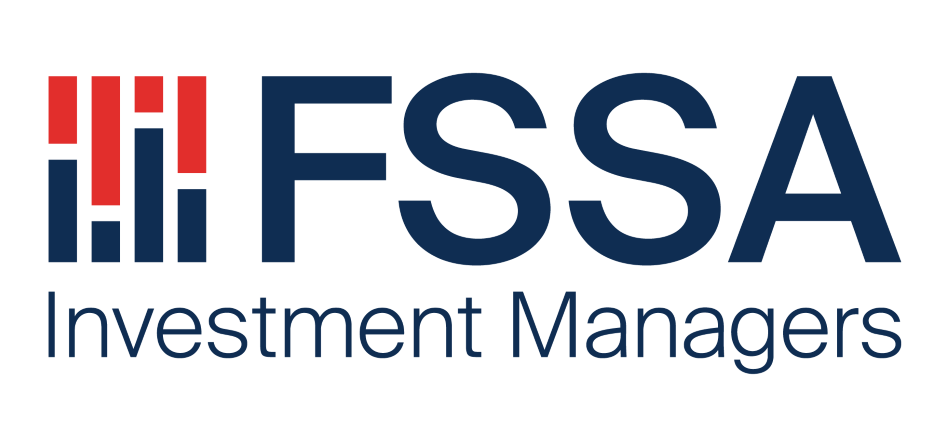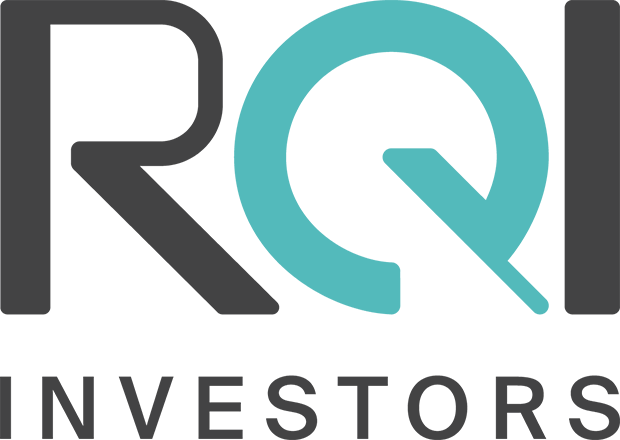Showing 1 to 44 of 44 results.
COVID-19 has created a challenging environment for income reliant investors, with interest rates near all-time lows and expected to remain there for the foreseeable future, while in equity markets, even the most reliable dividend payers are facing mounting pressure on their dividend policies over the short to medium term.
A diverse range of global, regional and sector based equity, multi-asset and fixed income investment strategies and funds
People are are at the heart of our success as a leading global asset manager
Concentration in equity markets has reached unprecedented levels, particularly in the United States. A select few mega-cap stocks, colloquially referred to as the "Magnificent 7," now dominate market indices, reflecting a convergence of technological innovation, speculative enthusiasm, and the allure of generative AI.
We are entering a new era. The year 2024 will be unpredictable and clouded by many uncertainties. It will be marked by geopolitical risks, the ongoing taming of the inflation beast, and how the US Presidential election will impact markets.
Global investment manager, First Sentier Investors, today announced changes to its investment capabilities within Australia.
From growing companies to up-and-coming names, our range of active, research-driven approaches to the Australian share market aim to deliver above market returns over the long term.
Our recent paper on Extreme Concentration focussed on the US (and so Developed Markets). This was the natural as the central issue of concentration was among the top 10 stocks in the US, among them, the “Magnificent 7”.
There was a large jump in capital raisings – in April alone 26 companies in the S&P/ASX300 issued new stock. By the end of 2020, 104 of these companies had undertaken raisings - the most number of companies that had ever raised equity in single year - totalling almost $40 billion.
Listed infrastructure has offered investors attractive risk-adjusted returns and lower correlations to traditional asset classes. This outcome has been achieved by providing effective downside protection during periods of equity market weakness.
Andrew Greenup and George Thornely explore the performance of the Global Listed Infrastructure Securities asset class and look ahead to the main themes expected to impact this asset class over the years ahead.
The Realindex Australian Share Value-Class A Fund is a real achiever that, since its inception in 2008, has delivered long-term outperformance compared to its benchmark for investors.
There’s a reasonable chance of achieving your investment objective over the long term by sticking to the plan. Not so fast! Here's why it's time to review your approach to asset allocation with volatile times ahead.
First Sentier Investors today announced unit holders have voted in favour of a change in responsible entity (RE) for a number of funds from Colonial First State to The Trust Company.
Despite the extraordinary events since its launch in June 2007 – including the Global Financial Crisis, volatile commodity prices, and political upheaval in many parts of the world – the strategy has delivered strong, consistent returns through a focus on valuation, quality and active management.
First Sentier Investors announced the appointment of Ashley Conn as Chief Financial and Strategy Officer.
With strong long term growth prospects and a track record of resilience through economic downturns, this increasingly institutionalised property sector is a defensive play for investors.
Global listed infrastructure underperformed in 2023 owing to rising interest rates and a shift away from defensive assets. Relative valuations are now at compelling levels. Infrastructure assets are expected to see earnings growth in 2024 and beyond, aided by structural growth drivers.
Head of Global Property Securities Stephen Hayes: Global city populations continue to grow, driven by urbanisation. The provision of housing for growing populations is a major challenge for many countries and cities. Adequate housing is a factor that influences a city’s mobility of labour, social wellbeing and commerce levels. Government housing policies are typically viewed holistically with policies covering social, private and rental housing. New supply is not always efficient and can be problematic particularly in densely populated cities.
We crossed six US states meeting over 70 infrastructure management teams as well as customers and suppliers at three conferences. We visited three corporate head offices, several regulators and toured the country’s largest nuclear power plant.
Deputy Head of Global Listed Infrastructure, Andrew Greenup, tells Livewire the most compelling reasons for investors to consider listed infrastructure as part of their portfolios, some common misconceptions, and shares a high conviction stock pick; the world's largest renewables owner.
Climate change transition and stranded asset risks can come from a complex mix of factors including carbon regulation, adapting to physical impacts, technological change and evolving consumer preferences. These shifts will be major influences on the investment performance of some sectors and countries. Below is a brief summary of the third Climate Change Whitepaper – Climate Change Transition Risks and Opportunities.
Equity markets are currently at all-time highs. This has generated returns which, we believe, are unlikely to continue, so we need to think about where returns are likely to come from over the next 10 years. We need to think about how investors can position themselves to take advantage of this. This note highlights why Emerging Markets (EM) Value looks to be a market segment which appears – relatively speaking – to be attractive.
2024 was a year marked by global inflation and economic growth concerns against a backdrop of worldwide elections. As we head into 2025, volatility will remain an enduring constant.
In September 2023, I met more than 30 global listed infrastructure companies and stakeholders from the UK, Europe and China. The following travel diary summarises my impressions and findings from these meetings.
In 2020, one group of companies has done particularly well – the popular digital technology companies focused on e-commerce, delivery and entertainment, to name a few industries. In emerging markets, they dominate the Chinese market; but they can also be found in Korea, Southeast Asia, Eastern Europe and Latin America. We do not own many of these in the strategy; and as such, we are often asked: What holds us back? After all, they have performed well and – at least on paper – should have the prerequisite to generate strong returns and free cash flow, given their often high gross margins, negative working capital profiles and asset light nature. While we are not disputing the potential for this in the future, we would argue for cautiousness on most of these projections.
The outlook for the global economy and financial markets looks more uncertain today than it has for a long time. Both interest rates and inflation have risen sharply. There is a growing consensus that much of the world will shortly be experiencing slowing economic growth.
The emerging markets asset class is extremely varied. It includes democracies and dictatorships, economies reliant on manufacturing and those that export commodities, and – most importantly – some of the very best companies in the world alongside some of the very worst. If the last ten years investing in emerging markets has taught us anything it is that in the long run, quality wins.
Discover how our equity managers with one of Australia's longest track records provide capital and income growth by investing in the Australian share market.
This article was produced in partnership with First Sentier Investors. We firmly believe that active management is crucial when constructing a geared portfolio. A geared investment strategy can be considered a more complex strategy that borrows to invest, ultimately magnifying an investor’s exposure to rising or falling markets.
This final paper is somewhat shorter than the first two, and simply aims to look a little deeper into whether zombie firms appear in Realindex portfolios, and how a Quality factor acts as a repellent for these stocks. This is more important in Value-oriented portfolios as the potential appearance of lower quality “junk” firms, or even zombies, is higher here than in broader universes.
Recently I attended the largest US utility conference, the 2024 Edison Electric Institute (EEI) Financial Conference, in Hollywood, Florida. I met with management teams from 26 regulated electric and gas utility companies.
In almost every meeting that we have with management teams, we will ask about incentivisation. In our view, it is an important question and the answer can be highly revealing about an organisation’s culture and behaviour. While it can be easy to be deceived by articulate CEOs talking up a big game with lots of investor-friendly buzzwords, in our experience what ultimately drives outcomes (at least the ones that management teams can influence) are the incentives. As with most things, striking the right balance is key. If there are no incentives to good performance (and no disincentive for poor performance), companies often end up with capital being systematically mis-allocated without any accountability. This tends to be the case with most State-Owned Enterprises (SOEs), which is one of the reasons we are generally cautious on them. On the other hand, too much of a good thing can also have adverse consequences, which we often see in turbo-charged incentive schemes concentrated among just a few senior executives. While they might lead to exponential growth for a short period of time, the growth is usually not sustainable. After a rapid period of expansion, imbalances are typically built up and when growth inevitably slows it is usually not just one skeleton that falls out of the closet.
2024 was a good year for global listed infrastructure. Strong earnings for energy midstream and a step-change in the earnings growth outlook for utilities helped the asset class to shrug off rising bond yields and political uncertainty.
Though Covid hasn’t yet finished with us, the markets have finished with Covid. In real life, there is still plenty of misery to go around, but in our opinion things have seldom been better for investors. Optimism has served us well, as the money-printing presses have rolled to counter the “unprecedented” threat. In investment, perhaps it is better to be a stupid optimist than a clever pessimist. And, we believe markets do indeed go up most of the time.
Over the last decade the electricity sector has been at the forefront of decarbonisation, ahead of transport, industry and agriculture.
Over the last 5 years, China has been on the rise within the Emerging Markets. We have all heard the story of the China Dragon and the impressive growth that the Chinese economy has been able to achieve relative to other large economies since the early 1990s. Even more recently as its growth has reduced it is still achieving more than double the growth of the United States. We believe the increase in regulatory risk from both the US and domestically in China has been a large contributor to this fall. The question for investors is this: will it continue and where does the next risk lie?
The energy crisis in Europe has boosted global demand for LNG. Global listed infrastructure companies pioneered the US LNG industry, investing US$50 billion since 2010. The energy crisis is providing an opportunity for LNG to secure its role as a transition fuel. With reliability and security of supply increasingly front of mind, US LNG exporters stand to gain market share, underpinning a further US$50 billion of investment over the next decade. An increased need for natural gas infrastructure will also benefit the broader North American midstream sector.
We recently spent a couple of weeks in the US and Canada, meeting with management teams from the railroads, utilities and energy midstream sectors, as well as with regulators. Below are some of our findings. We hope you find them interesting.
Firstly, regulations are nothing new — it has always been a part of the investment equation. If we look at Hong Kong or Singapore for example, the government would introduce new regulations on the property market from time to time; and in China, the government has introduced a number of new regulations for banks and insurance companies over the years. In fact, last year the government changed the pricing policy on automobile insurance, affecting quite a few Chinese general insurers. Therefore, regulation risk is always something to consider. Secondly, we believe the Chinese government has indeed changed — in terms of their priorities and focus — over the last three to four years. China was particularly focused on economic growth previously; and by all accounts, China has been a major economic miracle. From poverty, it has become the second-largest economy in the world. However, in recent years under the leadership of President Xi Jinping, the Chinese government has started to focus much more on social stability and equality. Thus, the underlying spirit of the recently announced regulations seems to be targeting wealthy entrepreneurs and conglomerates. The goal is to help improve the lives of workers, for parents to ease their burden with children, and so forth. Then, there is the environmental aspect too, with the Chinese government increasingly focused on pollution and carbon neutrality. From that perspective, it certainly looks like the Chinese government is becoming more socialist than it was before. I think that is the trend and to some extent, investors will need to acknowledge and accept it when investing in China.
Last quarter I visited infrastructure companies in Tokyo, Osaka and Nagoya. The trip included visits to ten corporate head offices and three site tours. This paper seeks to share some of the key findings from my meetings with Japanese passenger rail and utility companies.
Benefits of the rapid recovery of airport and toll road volumes far outweigh the operational issues they now face as a result. We expect higher load factors to compensate for airline capacity cuts, meaning traffic will continue to edge towards 2019 levels. European toll roads have a positive role to play in the decarbonisation of the transport sector, providing both societal benefits and investment return upside.
Since our last update, global markets have not been short of action and the manic behaviour characterising today’s markets has taken investors on another rollercoaster ride. While not quite comparable to the market movements seen during the dark days of March 2020, the recent correction — especially in China-related companies — has been notable. Yet, from a market perspective, a sense of normality is finally starting to emerge after the more speculative phases over the past 12-18 months. Companies related to the Work- or Consumed-From-Home environment are starting to discount a more realistic outlook and, equally, franchises with good long-term prospects that were experiencing temporary uncertainties caused by the pandemic have, for the most part, regained some of the lost ground as their underlying business fundamentals continue to improve.
Incorporated in 1885, BHP began as a silver, lead and zinc mine in Broken Hill, Australia. Over the next century the company grew into one of the largest diversified resource companies in the world with operations including oil and gas, steel production and mining of a variety of commodities including copper, potash, coal and diamonds. It listed on the Australian stock exchange in July 1961, making it the oldest company currently trading, and throughout much of this time it has been the largest company on the ASX by market capitalisation (currently it is ranked third). In 2001 BHP announced it would merge with fellow resource powerhouse Billiton. Billiton also had a long history dating back to a single tin mine in 1851 before growing into a major producer of aluminium, alumina, chrome, manganese, steaming coal, nickel and titanium. The company was Dutch controlled from inception before being acquired by South African firm Gencor in 1994. As the world’s largest metals and mining corporation, BHP Billiton began trading in July 2002 and operates as a dual listed company (DLC) – a corporate structure in which two companies have merged into a single operating business but retain separate legal identities and stock exchange listings (in this case Australia and the United Kingdom ).
Get the right experience for you
Your location :  Australia
Australia
Australia & NZ
-
 Australia
Australia -
 New Zealand
New Zealand
Asia
-
 Hong Kong (English)
Hong Kong (English) -
 Hong Kong (Chinese)
Hong Kong (Chinese) -
 Singapore
Singapore -
 Japan
Japan























 United Kingdom
United Kingdom 